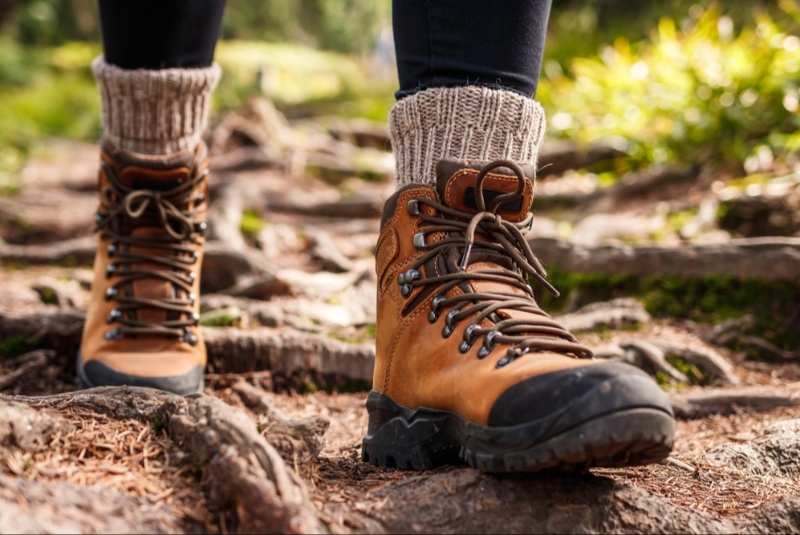Understanding Your Needs
Before diving into the myriad options available, it’s crucial to assess your hiking preferences and needs. Whether you’re traversing rugged mountain trails or enjoying leisurely walks through local parks, the right pair of hiking boots can significantly impact your experience. Durability and style are important, but so are comfort, support, and protection against the elements. Consider the terrain you’ll mostly be hiking on, the climate, and the distance of your typical hike. These factors will influence the type of boot you need, from heavily insulated and waterproof models for alpine treks to lighter, more breathable options for warmer climates. It’s about finding the right balance that suits your hiking habits while keeping your feet protected and comfortable.
Evaluating Durability
When it comes to hiking boots, durability is synonymous with quality materials and construction. Look for boots made from high-grade leather or synthetic materials that offer resilience against wear and tear. The method of construction, such as stitched or welded seams, can also indicate durability. Stitched seams tend to offer better longevity but may come at a higher price point. Additionally, the outsole’s material, usually rubber, should have a deep tread for longevity and slip resistance. A durable pair of boots is an investment, so consider the long-term benefits over the initial cost. Remember, a more durable boot can withstand harsh conditions and save you money in the long run by avoiding frequent replacements.
Style Considerations
While functionality should be your primary concern, there’s no reason to compromise on style. The aesthetic appeal of your hiking boots can enhance your outdoor attire and boost your confidence on the trail. Today’s market offers a wide range of styles, from traditional and rugged to sleek and modern. Consider the color, design, and overall look that best fits your personal style. However, it’s essential to ensure that your stylish choices do not compromise the boot’s functionality. The best boots are those that combine aesthetic appeal with practical features like water resistance, breathability, and ankle support.
Fit and Comfort
A well-fitting pair of hiking boots is non-negotiable. Poorly fitting boots can lead to discomfort, blisters, and even injury. When trying on boots, wear the socks you intend to hike in and test the boots later in the day when your feet are slightly swollen, mimicking walking conditions. There should be enough room to wiggle your toes but not so much that your feet slide around. Pay attention to the boot’s cushioning, arch support, and whether it has adequate ankle support for your needs. Break-in time can vary, so consider this factor when selecting a new pair. Remember, the right fit will provide comfort and stability on any terrain.

Technical Features to Consider
Beyond the basics, several technical features can enhance your hiking experience. Waterproofing is crucial for many hikers, especially those who trek in varied climates or cross streams. Look for boots with a waterproof membrane that still allows your feet to breathe. Another consideration is the boot’s weight; lighter boots are great for day hikes and reduce fatigue, while heavier boots may offer more durability and support for longer treks. Additionally, some boots come with reinforced toe caps for extra protection and Vibram soles for superior grip on slippery surfaces. Selecting boots with the right combination of technical features will ensure your hiking adventures are safe and enjoyable.
Maintenance and Care
Proper maintenance can extend the life of your hiking boots significantly. Clean your boots after each hike, paying special attention to removing dirt and debris that can degrade the materials. If your boots are waterproof, reapply a waterproofing treatment periodically, as the effectiveness can diminish over time. For leather boots, use a conditioner to keep the material supple and prevent drying and cracking. Always allow your boots to dry naturally away from direct heat, which can cause the materials to warp or shrink. By taking good care of your boots, you’ll ensure they remain durable and stylish for years to come.
Making Your Selection
With a clear understanding of your needs, a keen eye for durability, an appreciation for style, and knowledge of what makes a comfortable fit, you’re well-equipped to select the perfect pair of hiking boots. Don’t rush the process—take the time to try on various models and walk around in them. Reading reviews and seeking recommendations can also provide valuable insights. Ultimately, the best pair of hiking boots is one that feels like an extension of your feet, providing confidence and support as you explore the great outdoors.
Selecting a durable and stylish pair of hiking boots involves balancing functionality with aesthetics, understanding the importance of fit and comfort, considering technical features, and committing to proper care and maintenance. By following these guidelines, you’ll be prepared to tackle any trail with confidence and in style.




